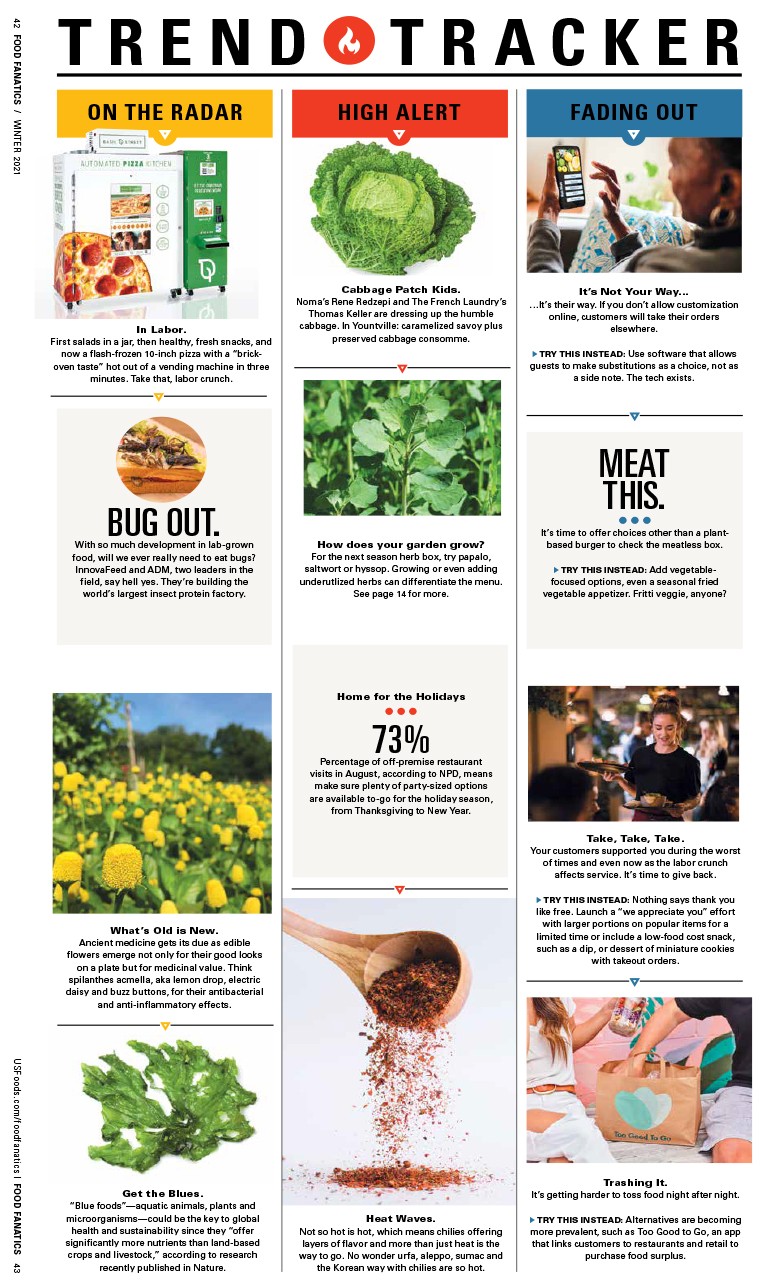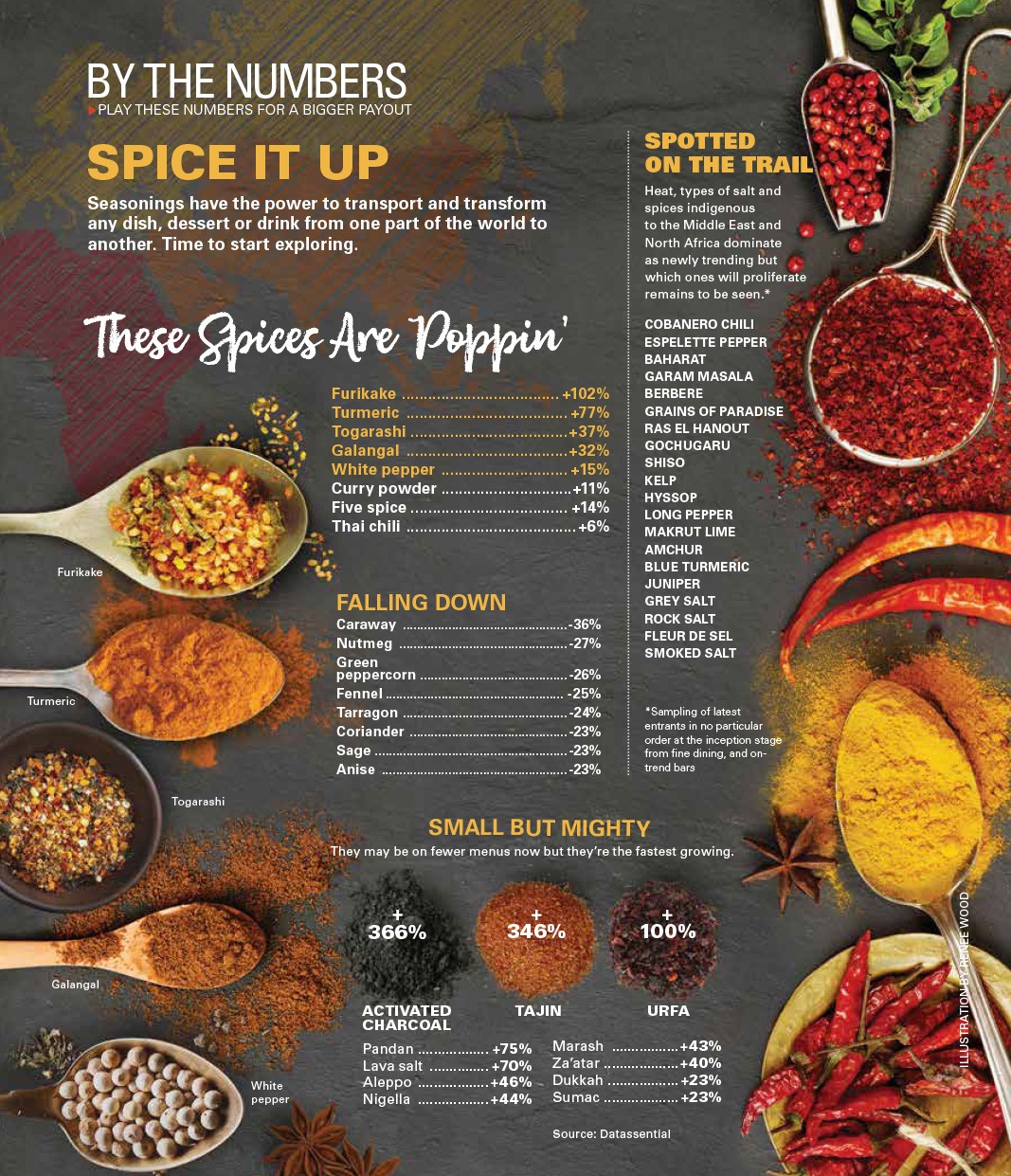Vegetable Matters: Vegetarian Restaurant Options
Once an afterthought at most restaurants, customers with vegetarian diets are now the prized dining segment.
Not long ago, dining out wasn’t much fun for vegetarians. Options were likely limited to a ho-hum pasta dish, a roasted vegetable plate or, if push came to shove, an entree-sized portion of that appetizer salad.
That was a time when vegetarians, vegans and diners preferring meatless items were a rare breed. But today, vegans and vegetarians aren’t the only ones subscribing to a meat-free diet. Carnivores increasingly are opting for meatless dishes as a way to eat healthier, according to Datassential, a food market research firm.
Add the rising costs of proteins like beef to the equation, and it’s no surprise that many chefs and restaurateurs are discovering that paying more attention to meatless offerings can help foster new business and build customer loyalty.
New York City-based sandwich chain ‘wichcraft caters to a wide audience that includes vegetarians and vegans, as well as folks looking for more healthful quick-serve options. Partner Jeffrey Zurofsky says the local sandwich chain offers information about each menu item not only for nutritional resources, but also to distinguish between items that might have animal byproducts.
“We make sure to let our guests know if something is made with chicken stock or milk so they can make an informed decision,” he says. Two popular mainstay items on ‘wichcraft’s menu happen to be meat-free: chickpea hummus with tahini and mint pesto ($7.35), and zucchini and mozzarella with basil, Parmesan and roasted tomatoes ($7.35).
One segment that could use more meatless attention: kids. According to Food Genius, a restaurant menu trends research firm, vegetarian and vegan items are found on less than one percent of kids’ menus. The most common items are rice, mac and cheese and quesadillas.
Chef-owner Rhona Bowles Kamar of Ramsi’s Café on the World in Louisville, Ky., along with her husband, Ramsi, offers the usual kid fare of pasta with marinara ($6) and PB&J ($5), but little diners also go for the fruit skewers drizzled with Amazon dark chocolate sauce ($5) and falafel sandwiches ($9.70) on the regular menu. She finds the restaurant’s Sunday brunch buffet is the best time to court vegan families because it gives everyone a chance to try a variety of dishes, including the restaurant’s vegan biscuits and ginger-plantain French toast, soy sausage and tofu scrambles. “They come back week after week because of our selection and the kids love it,” she says.”
Making Room for Meatless
For meat-centric restaurants, a few tweaks can satisfy guests and keep them coming back. At Chicago’s French-inspired Brindille, Chef de Cuisine Ali Ratcliffe-Bauer says vegetarian diners expect more today from restaurants. “When vegetarians dine here, they want more options than the one or two dishes we have on the menu,” she says. “I think they are tired of being offered risotto and pasta as their main options.”
"When vegetarians dine here, they want more options than the one or two dishes we have on the menu."
-Ali Ratcliffe-Bauer, chef de cuisine at Brindille
Fried shishito peppers with caramelized cauliflower and curried eggplant mousse ($9), and seared silken tofu served with Beluga lentils ($18) nestle in seamlessly among the octopus, rabbit and bone marrow dishes at Chicago Japanese restaurant Kabocha.
“The use of just one item to accommodate vegetarian diners is not conducive to pleasing the customer as they typically feel pigeon-holed and their dining needs are an after-thought,” says Malory Scordato, the former general manager.
That said, highlighted vegetarian sections are becoming commonplace on meat-heavy menus. Ardeo + Bardeo in Washington, D.C., has a “vegetables” section, featuring dishes like roasted Hakurei turnips with wilted greens, truffle butter and breadcrumbs ($7). Old Major in Denver designates its menu by The Butcher (meat), The Monger (fish) and The Farmer (vegetables), which features three rotating vegetarian dishes that are available a la carte or as a three-course tasting for $30.
Bottom of Form
One of the best ways to discover what vegetarian and vegan diners want is simply to ask one. “One of my line cooks is vegan and he keeps us very in touch with the local vegan community,” Bowles Kamar says. “He’s a great source for what people like and are looking for.”
Expanding Your Reach
Bowles Kamar says catering served as a form of nontraditional marketing for her restaurant and boosted its vegetarian and vegan clientele. “We quickly became known as the go-to restaurant for vegetarian, vegan and ethnic weddings,” she says. “We never had a budget for advertising so this was a great outlet to get our food in front of potential diners.”
Embracing social media has helped, too. Bowles Kamar will often see customers come into her restaurant whom she has engaged with on Facebook and has increased her community programs, like vegetarian cooking classes, in turn. “It really pays to be plugged in like that with your diners,” she says.
Showcasing the abundance of new seasonal vegetables on social media has helped promote vegetarian dishes at ‘wichcraft, Zurofsky says. “We utilize social media for all of our menu items, promoting that many of the ingredients come from the local green market and are seasonally inspired.”
Promoting options can help bring in crowds, but a successful vegetarian program means maintaining that same level of commitment to vegetables as proteins. “The beauty of our vegetarian items is that they are delicious and appealing to all diners, and are not marketed as solely vegetarian,” Scordato says.
Judy Sutton Taylor writes for a variety of national food and business magazines.



